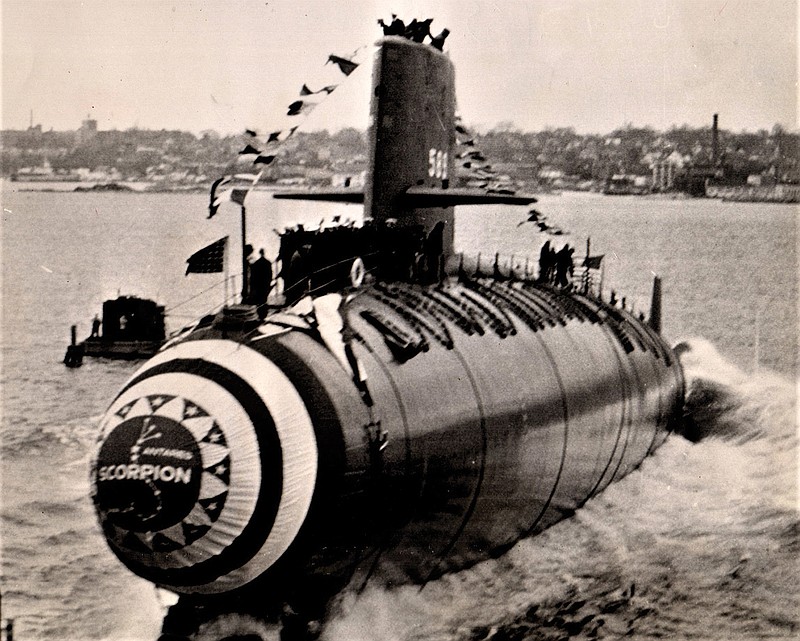The 1960s were a tumultuous period for U.S. naval forces embroiled in intelligence-gathering operations during the Cold War. Dangers abounded for Navy personnel that included tragedies such as the USS Thresher - a nuclear-powered attack submarine lost on a sea trial because of an electrical system malfunction, claiming the lives of 129 sailors and civilians.
Such catastrophes did not appear to influence the decision of one aspiring Missouri sailor, who, despite any perceived hazards in pursuing such a calling, forged ahead to become an officer and entered the submarine forces.
Growing up in Jefferson City in the 1950s, Laughton Smith assumed the reflection of many young children of the era. He attended a local Presbyterian church and actively participated in the Boy Scouts, helping conduct classes in boating during summer camps.
"'Laughton,' being a rather high-sounding name for such a natural guy, gave way to 'Smeed' early in Smeed's grade school years," noted a brief biography for Smith in the 1965 edition of "The Lucky Bag" - the yearbook for the U.S. Naval Academy. The yearbook went on to explain, "Laughton has always had a winning personality, with a bright smile and heartwarming enthusiasm."
Graduating Jefferson City High School in 1960, Smith hoped to attend the U.S. Naval Academy; however, fellow classmate Jim Ayers - the principal nominee - was selected. In the interim, Smith attended classes at the University of Missouri-Columbia until early summer of 1961, when he received his own appointment to the academy.
"There were four of us from Jefferson City who graduated in 1960 and ended up going to a military academy," said Ayers, childhood friend of Smith. "Laughton and I went to the Naval Academy while a classmate of ours, Robert Davenport, went to the Air Force Academy and was lost in Vietnam.
"Joe Hammel from Helias (High School) also went to the Air Force Academy a year ahead of us and was lost in 1968."
In 1965, Smith graduated from the Naval Academy and went on serve as a lieutenant junior grade at Groton, Connecticut. On April 8, 1967, the young sailor embarked upon yet another great adventure of his life when marrying the former Jane Victoria Graham at the Immanuel Episcopal Church in Wilmington, Delaware, the bride's hometown.
"We were only a grade apart at the academy so I saw him often," Ayers said. "We both ended up assigned to nuclear submarines during our naval careers."
The April 9, 1967, edition of the Sunday News and Tribune reported Smith "will report in late April to the nuclear submarine 'Scorpion' which is home ported in Norfolk, Va." The article also explained that following their honeymoon in Vermont, the couple would reside in Norfolk.
The USS Scorpion was a 3,500-ton nuclear attack submarine and although "the Navy had always portrayed the 252-foot-long sub as a gleaming showpiece," it was long overdue for an overhaul, as noted in the book "Blind Man's Bluff: The Untold Story of American Submarine Espionage."
The authors also wrote, "The crew had taken to calling her the 'USS Scrap Iron'" because of mechanical issues such as "oil leaks in the hydraulic systems and seawater seeping in through the propeller shaft seals."
During the early months of 1968, the "Scorpion was one of only four of the Atlantic Fleet's submarines that was still waiting to be refitted with safety features" identified following the loss of another nuclear submarine, the USS Thresher, nearly five years earlier.
Despite not having these safety upgrades completed, the U.S. Navy continued to have the submarine perform Cold War missions.
On May 27, 1968, the U.S. Navy conveyed the USS Scorpion was missing and that they had last radioed their position six days earlier. The June 6, 1968, edition of the Charlotte News (Charlotte, North Carolina) reported, "At that time the sub was 365 miles south-southwest of the Azores, approaching the pinnacles and gulfs of an underwater mountain range."
The May 29, 1968, edition of the Jefferson City Post-Tribune reported Laughton Smith, who was serving as the submarine's communications officer, had written his sister weeks earlier that their "craft was having trouble with its communications equipment" and that he had been busy "getting the equipment back in shape."
Speculation abounded as to the cause of the mysterious disappearance of the submarine with a complement of 99 crewmembers. It was the height of the Cold War and an initial suspicion was that it had been torpedoed by a Soviet submarine or surface vessel, while others believed it might have struck an underwater mountain or ridge.
Following a five-month search, the wreckage of the vessel was eventually located in more than 10,000 feet of water 400 miles southwest of the Azores (in the mid-Atlantic); where more than eight dozen sailors remain in their watery grave. Although the Navy prepared a report in 1968 detailing its findings regarding the submarine's loss, it was withheld from the public for a quarter-century.
"This week, the Navy released a report saying the Scorpion may have been destroyed by its own torpedo," reported the Springfield News-Leader on Oct. 29, 1993. "The report concluded of the accident, 'The torpedo was released from the tube, became fully armed and sought its nearest target, Scorpion.'"
James Ayers sorrowfully explained, "Of the four of us from the Class of 1960 in Jefferson City who went on to our respective military academies, I was the only one who survived my period of service."
He added, "Laughton's loss truly struck a chord within me because he was my best friend in high school and our families had been so close. He was only 26 when he disappeared, and it is easy for the community to forget that.
"I want to make sure that the community is aware of his service to the nation and remembers his sacrifice in addition to all others who died during their service as well."
Jeremy P. mick writes on behalf of the Silver Star Families of America.

